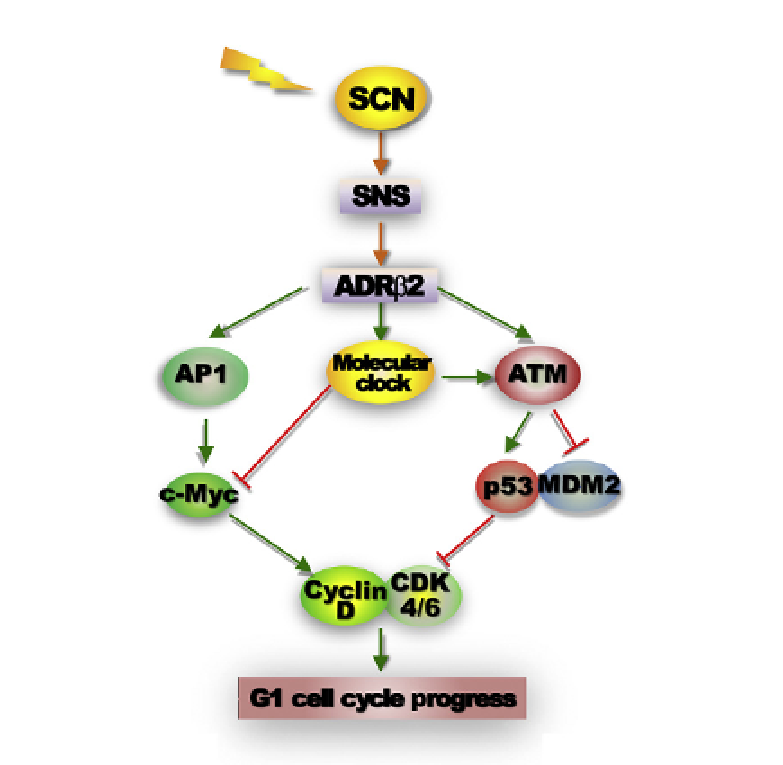Biology Reference
In-Depth Information
Figure 9.4 Control of G1 cell cycle progression by the peripheral clock and the SNS. The
activation of the b-adrenergic receptor 2 (ADRb2) by SNS signaling leads a coupled
induction of Ap1 and Period genes via CREB-mediated transcriptional regulation, which
in turn activates AP1-controlled Myc induction and Myc-dependent G1 cell cycle pro-
gression as well as peripheral clock that prevents Myc overexpression via BMAL1/
CLOCK-mediated transcriptional regulation. The activation of ADRb2 intracellular signal-
ing and the peripheral clock also synergistically activate ATM, which induces p53 by
blocking p53-MDM2 interaction to provide an additional mechanism for preventing
MYC oncogenic activation. Disruption of the central clock-SNS-peripheral clock
axis in mice by chronic jet lag or ablation of Per genes suppresses peripheral clock acti-
vation in response to ADRb2 activation and abolishes ATM-mediated p53 induction but
has no effect on Ap1-Myc signaling. Together, these events lead to uncontrolled G1
cell cycle progression and neoplastic growth of osteoblasts both in vitro and in vivo.
29,149

Search WWH ::

Custom Search